Last thing I did in 2016 was complete a TTE Test.
Time To Exhaustion is a metric introduced by WKO4 to describe the duration you can sustain FTP. This is kind of revolutionary. FTP is no longer considered your ’60-minute power’ or ‘95% of your 20-minute power’. FTP and TTE describe a more individualized – and more functional assessment of what your sustainable Aerobic power is, with both magnitude and duration.
FTP, according to Allen & Coggan in Training and Racing with a Power Meter is: The highest power that a rider can maintain in a quasi–steady state without fatiguing for approximately one hour” The updated definition was included to acknowledge that FTP has both a magnitude (power) and a duration (TTE). And don’t call it a “new definition” 🙂
From Last Year
For myself, with a physiology that tends toward ANaerobic output, I can crush an 8-minute test, and even over-achieve on a 20-minute test using my ANaerobic reserves, but I would be unable to hold the resulting FTP number for a full 60-minutes.
For instance, last year in Tucson at our 2016 team training camp, my FTP was set to 310 W. I had previously tested as high as 332 W on a 20-minute test a month prior after doing TrainerRoad Sweet Spot Base program (which, incidentally, is still my first recommendation for time-crunched athletes).
My 60-minute result was 277 W.. a far cry from my “predicted” FTP of 310+ W.
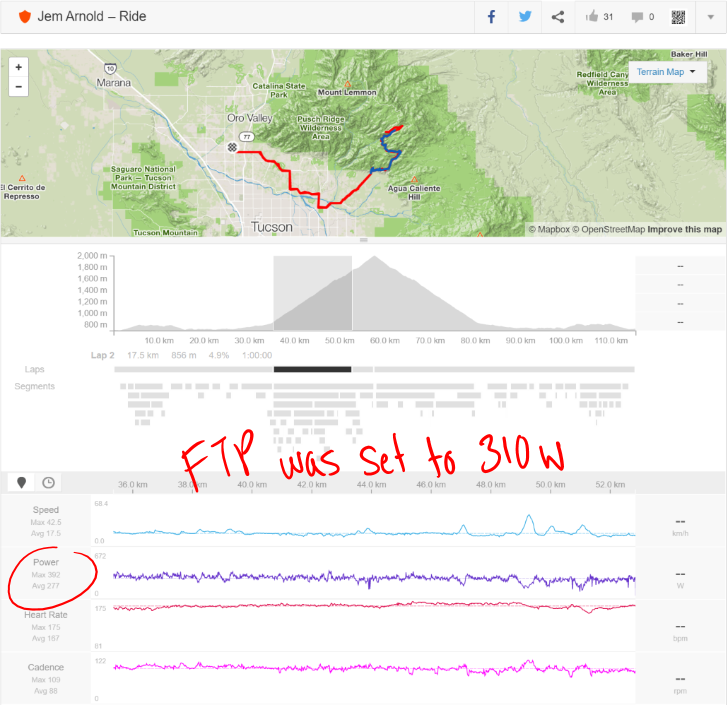
TTE Testing Protocol
What I would suggest for testing – and I’ve stolen this from the smart guys behind WKO4 – is that the more ANaerobic-dominant an athlete is (Pursuiter, Puncheur, Sprinter, etc.) the longer their FTP test needs to be to accurately assess pure Aerobic fitness. On the other hand a TT’er, who tends to have less ANaerobic contribution overall, should be able to more accurately estimate their FTP with a traditional 20-minute test.
- Ideally one should test FTP & TTE when sufficiently fresh. This doesn’t mean a full week taper, but a couple easy days leading into the test should be enough
- Do a 20-minute Test. This will set a power target using the traditional 95%
- Ensure sufficient rest after testing. One active recovery day in between should be sufficient
- Now do a TTE Test, using your target power (95%) from the 20-min test result. Aim for 40-min. If it feels easy, go longer rather than higher – extensive rather than intensive.
TTE Test Results
I didn’t quite follow my own advice. I (hoped that I) had a good sense of where my FTP should be and went right to the TTE Test. My FTP has been set to 315 W which gave me approximately correct subthreshold zones, but I suspected this might be a bit high. So I tempered my goal to be 40-min @ 310 W.
It went pretty well 🙂

I had my Kickr set up in front of my desk, with split-screen Zwift climbing the KOM mountain on one side and Sagan crushing Flanders in the Rainbow stripes on the other. If that isn’t motivation, I don’t know what is!
I started with a slight negative split and increased my wattage over the test duration as it became clear I was feeling strong. End result was better than I expected, with 49-min at 318 W. The 10-min intervals looked like:
Detailed analysis with WKO4
Here’s the fun part
First chart shows Power (yellow) and HR (red) along with certain HR thresholds and efficiency numbers.
- It shows I was on top of my early power, and increased the workload through the test by around 22 W (7%)
- And only reached my Lactate Threshold Heart Rate (LTHR, set to 175 bpm) at around 40-min into the test. No wonder I felt like I could keep going!
- My peak 20-minute interval was the final 20-minutes of the test, at 325 W. The 95% estimate would have put me at 309 W FTP for this interval.
This chart shows the Power Duration Curve (PDC) for the entire activity, as well as modeled comparison of this activity vs. previous 90-day bests. The 40-min Test was around an hour into this 3+ hour trainer ride (I had to hit 19000 km for the year  ).
).
- Note the modeled estimate of FTP and TTE for this activity vs. prev 90-day bests in the top left corner.
- This ride put me right at 315 W for ~46min, just about exactly where I had my FTP set going into the test. So no bump in FTP but a resounding confirmation.
- I showed new 90-day bests for time durations from 15-minutes through to 3-hours 15-minutes! I mean.. this includes mostly Base training so isn’t super surprising, but still a nice indication of progress
This is my PDC for my Base 2017 cycle thus far, which started Oct 24, 2016. Mean Max Power (MMP) in yellow, PDC (modeled curve) in red. Blue shows the same curve omitting today’s activity, so the numbers not including my TTE test. The highlighted text shows the same; modeled FTP (yellow) and TTE (orange) for the entire Base 2017 training cycle, and for ‘today minus 1’ (blue).
- FTP and TTE act as an intersect point derived by the WKO4 model, as the point at which your sustainable power begins to drop
- Note where power diverges from previous 90-day bests, again from 15-min all the way past 2-hours.
- Not only did this test push up my FTP, but it pushed out my TTE (both Intensive and Extensive)
Implications for further training
I’m a bit scared at what WKO4 wants me to do for Extensive and Intensive FTP intervals.

I start Sweet Spot (SST) Base training next week, inspired by TrainerRoad and WKO4 but with my own adjustments. WKO4 wants me to complete much longer duration intervals based on my FTP and TTE, but I suspect that 50min @ 95% will be too much threshold stress for me to maintain.
- The general plan is 2-3x SST workouts per week
- Progressing weekly: 2x30min –> 1x50min –> 2x40min –> 3x30min, etc.
- Intensity will begin at 90% FTP
- Cumulative ~120-minutes at SST weekly out of total 12-15 hrs/wk
- This is around the same volume of SST per week as TRR Sweet Spot Base High Vol I
- The extra volume will be mostly Zone 2 with the occasional VO2max drill to keep the top-end power fresh.
I’ll provide more details of how I’ve structured my Base training plan soon.
I’m trying to build a nice broad base of Aerobic power that I can rely on for the upcoming 2o17 Season, and I think the takeaway from today is that my focus on Extending sustainable Aerobic power is starting to pay dividends for my threshold power and overall fitness.
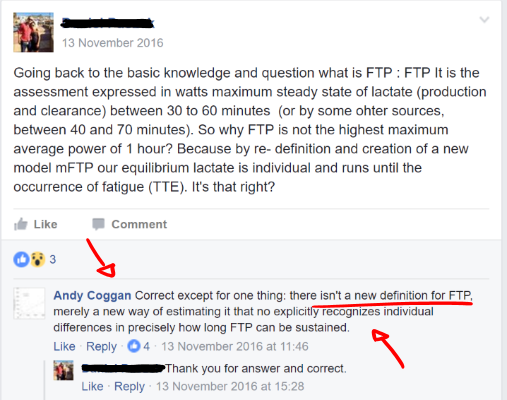
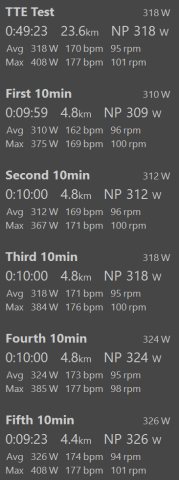
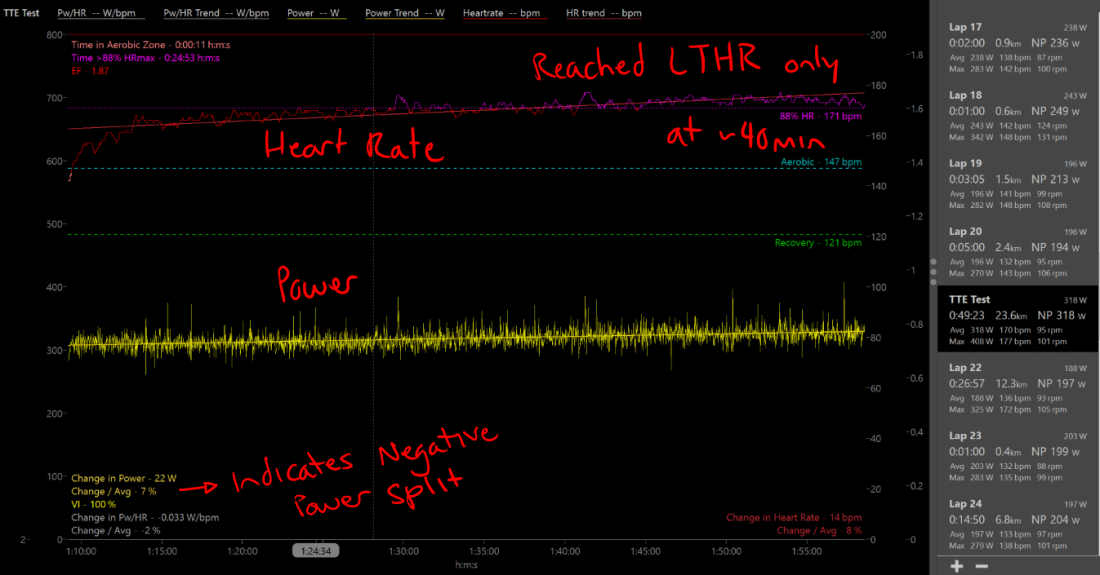
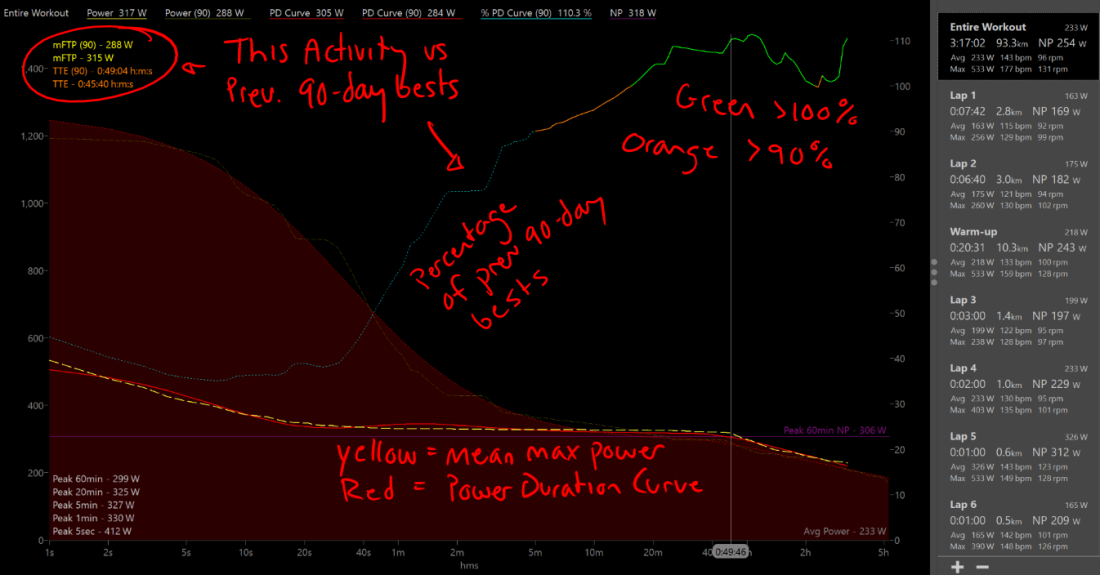

Is FTP in this new context the same as critical power?
LikeLike
Yesss…ish.
FTP & CP are specific concepts, with specific definitions, and most importantly they are determined from specific test protocol. But they attempt to capture roughly the same thing, ie. power output at maximal metabolic steady state.
They are often used interchangeably in general conversation, and we all know generally what we’re talking about. But I think being precise with our definitions and understanding the differences will add value & nuance to our understanding of the underlying concepts.
I wince a bit when I hear the recent trend of “FTP” applied to the outcome of a ramp test protocol. Of course I understand why it makes sense to expand the original definition to open the conversation to a wider audience. I’ll try not to be a prescriptivist when it comes to physiological terminology 🙂
LikeLike